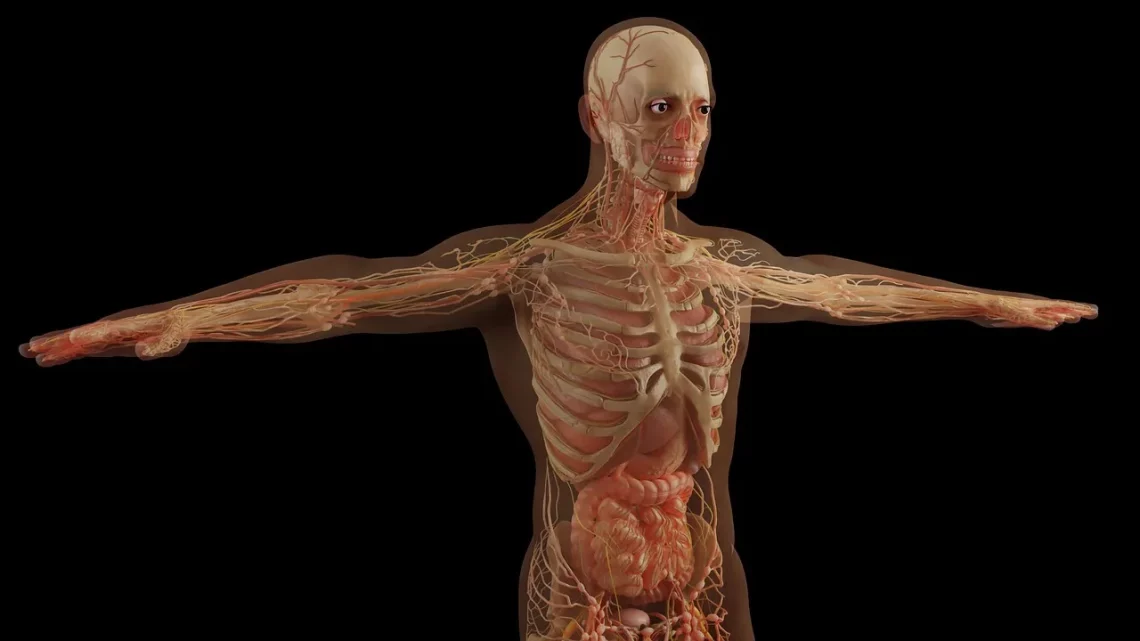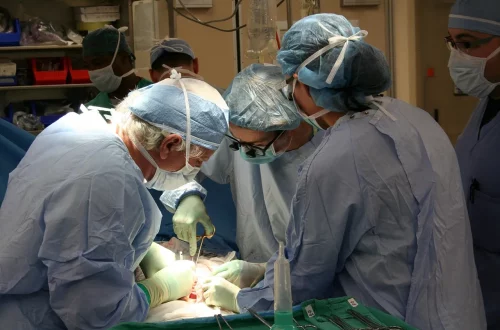
Understanding Outy Vagina: Insights and Perspectives on Anatomy
Understanding the complexities of human anatomy can often lead to profound insights about our own bodies and those of others. One aspect that frequently sparks curiosity and discussion is the variation in genital anatomy among individuals, particularly in women. The vagina, a crucial part of the female reproductive system, displays a range of anatomical diversity, which includes characteristics such as depth, width, and external appearance.
These variations are not merely superficial; they can impact aspects of health, sexual function, and personal identity. When considering the anatomy of the vagina, it’s essential to approach the subject with a sense of respect and understanding. Cultural perceptions, societal norms, and personal experiences shape how individuals view their bodies and those of others. By fostering an environment of open dialogue and education, we can pave the way for a better understanding of these complex anatomical features.
As we delve deeper into the topic, it’s important to recognize that each person’s anatomy is unique, and what is considered “normal” can vary greatly. This article aims to explore the various facets of vaginal anatomy, shedding light on the diversity that exists and encouraging a more nuanced perspective on female anatomy.
Variations in Vaginal Anatomy
Vaginal anatomy is not a one-size-fits-all scenario. Each woman has her own unique anatomical features, which can be influenced by a variety of factors, including genetics, hormonal changes, and life experiences. These variations can manifest in several ways, such as the length and width of the vaginal canal, the appearance of the labia, and the overall shape of the vulva.
One of the most notable aspects of vaginal anatomy is the structure of the labia, which can differ significantly among individuals. The labia majora and labia minora can vary in size, color, and shape, leading to differing external appearances. Some women may have prominent labia, while others may have more subtle features. This diversity is entirely normal and reflects the wide spectrum of human anatomy.
Additionally, the depth of the vaginal canal can also vary. On average, the vaginal canal measures around 3 to 4 inches in length, but it can stretch during sexual arousal and childbirth. This adaptability is crucial for various functions, including intercourse and childbirth, highlighting the vagina’s role as a dynamic organ.
Understanding these variations is essential, especially in contexts such as sexual health and education. Many women may feel insecure or abnormal due to societal standards or misconceptions about what a “typical” vagina should look like. Education and awareness can help dispel these myths, promoting body positivity and acceptance.
It’s also important to note that anatomical variations can influence sexual experiences. Some individuals may find that certain positions or types of stimulation are more pleasurable based on their unique anatomy. Open communication with partners and a willingness to explore can enhance sexual satisfaction, fostering a healthier relationship with one’s body.
In summary, recognizing and appreciating the variations in vaginal anatomy can empower women and promote a more inclusive understanding of female bodies. Each individual’s anatomy is a testament to the diversity of human life, reinforcing the idea that there is no singular way to be “normal.”
Common Misconceptions About Vaginal Anatomy
In a world where misinformation and myths can easily spread, it is crucial to address common misconceptions surrounding vaginal anatomy. These myths can lead to feelings of inadequacy, shame, or confusion among individuals who may not fully understand their bodies.
One prevalent misconception is the idea that all vaginas should look the same. This belief can stem from unrealistic portrayals in media and pornography, which often depict a narrow standard of beauty. However, as previously discussed, there is a wide range of normal when it comes to the appearance of the vagina and vulva. Embracing this diversity is essential for fostering healthy body image.
Another common myth is that vaginal tightness is directly correlated with sexual satisfaction or desirability. In reality, sexual pleasure is influenced by numerous factors, including emotional connection, arousal, and technique. The idea that a tighter vagina equates to better sexual experiences is a misconception that can create unnecessary pressure on individuals and couples.
Furthermore, the idea that vaginal health is solely determined by external appearance is misleading. Many women may worry about odor or discharge and may associate these with poor hygiene or health issues. However, it’s important to recognize that the vagina has its own natural balance of bacteria and secretions that contribute to its overall health. Regular gynecological check-ups and understanding one’s own body can alleviate many concerns related to vaginal health.
Additionally, there is a misconception that women who have not given birth have a “tighter” vagina compared to those who have. While childbirth can affect the vaginal canal’s elasticity, factors such as age, hormonal changes, and individual anatomy play a more significant role in determining vaginal tightness.
Addressing these misconceptions is vital for promoting a healthy understanding of female anatomy. Education, open conversations, and access to reliable resources can empower individuals to embrace their bodies and dispel harmful myths. By fostering a culture of acceptance and knowledge, we can encourage a more positive view of vaginal anatomy and overall female health.
The Role of the Vagina in Reproductive Health
The vagina plays a critical role in reproductive health, serving not only as a passage for menstrual flow and childbirth but also as a key component in sexual health and pleasure. Understanding this role is essential for appreciating the importance of maintaining vaginal health throughout one’s life.
One of the primary functions of the vagina is to serve as the birth canal during childbirth. This unique capability allows for the safe delivery of a baby, showcasing the vagina’s remarkable elasticity and adaptability. During pregnancy, various hormonal changes prepare the vagina for this significant event, emphasizing its role in the reproductive process.
Additionally, the vagina is home to a complex ecosystem of bacteria, primarily Lactobacillus, which helps maintain a balanced pH level and protects against infections. This natural flora is essential for preventing conditions such as bacterial vaginosis and yeast infections. Understanding the importance of this balance can help women make informed choices regarding hygiene products and practices.
Sexual health is another critical aspect of vaginal anatomy. The vagina contains numerous nerve endings, making it a sensitive area that can contribute to sexual pleasure. A healthy sexual relationship involves understanding one’s own body and communicating with partners about preferences and comfort levels.
Moreover, regular gynecological examinations are vital for maintaining vaginal health. These check-ups can help detect any issues early on, such as infections or abnormal growths, allowing for timely intervention. Women should feel empowered to discuss any concerns with their healthcare providers, fostering a proactive approach to reproductive health.
In summary, the vagina plays a multifaceted role in reproductive health, encompassing childbirth, sexual pleasure, and self-care. Understanding this complexity can empower individuals to take charge of their health and well-being, promoting a holistic view of female anatomy.
Embracing Body Positivity and Acceptance
In a society often inundated with unrealistic beauty standards, embracing body positivity and acceptance is more crucial than ever, especially when it comes to understanding female anatomy. The journey toward body acceptance can be challenging, but it is essential for fostering a healthy relationship with oneself.
Body positivity involves recognizing that all bodies are unique and that diversity should be celebrated rather than stigmatized. This movement encourages individuals to love and accept their bodies, regardless of societal expectations or norms. In the context of vaginal anatomy, this means appreciating the diversity of shapes, sizes, and appearances that exist.
One way to promote body positivity is through education. By learning about the natural variations in anatomy, individuals can begin to appreciate their own bodies and those of others. This understanding can help dismantle harmful stereotypes and encourage a more inclusive perspective on beauty.
Social media can play a significant role in shaping perceptions of body image. Following accounts that promote body positivity, diversity, and realistic portrayals of female anatomy can inspire individuals to embrace their uniqueness. Engaging with communities that celebrate diverse bodies can provide support and validation, reinforcing the idea that every body is worthy of love and respect.
Furthermore, open conversations about anatomy and health can contribute to greater acceptance. Sharing personal experiences and challenges can help normalize discussions around body image, reducing feelings of isolation. Encouraging friends and family to engage in these conversations can create a supportive environment where individuals feel empowered to express their feelings about their bodies.
Ultimately, embracing body positivity and acceptance involves a commitment to self-love and understanding. By recognizing the beauty in diversity and fostering a culture of acceptance, individuals can cultivate a healthier relationship with their bodies and promote a more inclusive narrative around female anatomy.
In conclusion, understanding vaginal anatomy is a multifaceted journey that encompasses variations, misconceptions, reproductive health, and body positivity. By fostering education and open dialogue, we can promote a healthier, more accepting view of female anatomy, empowering individuals to appreciate their bodies and prioritize their health.
**Disclaimer: This article is for informational purposes only and does not constitute medical advice. For any health concerns or questions, please consult a qualified healthcare professional.**




